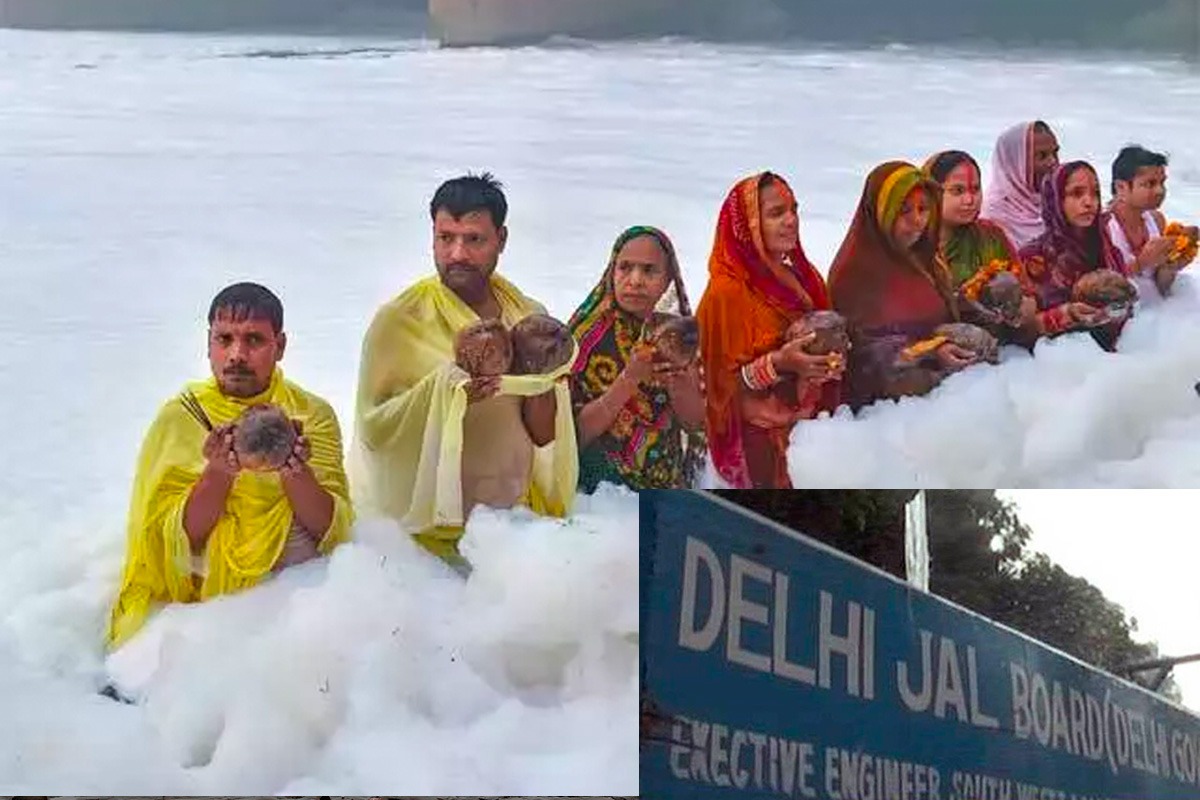The Yamuna River, an ancient watercourse revered by generations, now stands as a grim testament to environmental negligence, with its waters cloaked in a toxic foam reminiscent of a blizzard’s aftermath. Against the backdrop of this ecological calamity, the Chhath festival, a celebration of the sun god Surya, unfolds at the polluted river, highlighting a stark juxtaposition of faith and environmental degradation. The Delhi government’s attempts at last-minute cleanup, marked by boats, bamboo barricades, and water spraying, reveal a glaring inadequacy in addressing the longstanding issue of industrial foam in the Yamuna.
The first point of concern centres around the Delhi government’s lackadaisical approach to tackling the industrial foam plaguing the Yamuna. Despite the visibly polluted conditions and the urgency demanded by the Chhath festival, cleanup efforts appear more as token gestures than substantive actions. Boats navigating through contaminated waters and bamboo barricades do little to address the root cause of the foam, indicative of a reactive rather than a proactive stance. The laxity in executing comprehensive cleanup measures underscores a systemic failure in managing the environmental health of one of India’s most vital rivers.
Beyond the aesthetics of the frothy spectacle, the second critical concern revolves around the grave toxicity lurking in Yamuna’s waters, posing a direct threat to both residents and aquatic life. The Chhath festival, a four-day congregation at the polluted river, sees worshipers immersing themselves in contaminated waters as an act of devotion. However, the Delhi government’s inability to address the underlying pollution exacerbates the risks. The toxic cocktail of industrial waste and untreated sewage not only jeopardizes the health of those directly exposed but also endangers the delicate aquatic ecosystem. With each passing day, the Yamuna’s toxicity inches closer to becoming an irreversible menace.
The most pressing point necessitates a paradigm shift in the government’s approach—a transition from superficial cleanup measures to a war footing operation dedicated to salvaging the Yamuna. The festering issue of toxic foam demands a comprehensive strategy that includes not only surface cleanup but also stringent regulations on industrial discharges and sewage treatment. A fragmented and piecemeal approach will prove futile in the face of this escalating crisis. The government must acknowledge the urgency, allocate resources judiciously, and implement sustainable solutions to rescue the Yamuna from the clutches of pollution. Anything short of a war footing cleanup operation risks further degradation of the river and the peril of irreparable environmental consequences.
The industrial foam in the Yamuna is not merely a cosmetic blemish but a symptom of deeper systemic issues. The Delhi government’s inadequate response to this environmental emergency highlights a failure to prioritize the health of a river woven into the cultural fabric of the region. Urgent action is imperative—a proactive cleanup approach, addressing toxicity concerns, and implementing a comprehensive, war-footing operation are the need of the hour. The Yamuna’s survival hinges on decisive, immediate, and sustained efforts to cleanse its waters and preserve it for future generations. Anything less would be a betrayal of not just the river but also the communities that have long relied on its life-sustaining waters.

